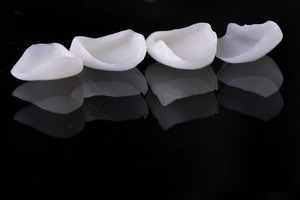
Nowadays, veneers are often the cosmetic treatment of choice for patients who are looking to transform their smiles by addressing multiple cosmetic flaws at once. However, many people don’t realize that when veneers were first introduced, they were quite different from how they are today. Here’s a quick look at the fascinating history of veneers and how far they’ve come.
1928: The Introduction of Veneers
Back in the late 1920s, a Californian dentist named Charles Pincus needed to find a way to improve an actor’s smile for an upcoming shoot. His solution was thin sheaths of acrylic material that were attached to the teeth. These were the very first veneers. However, the adhesive used to keep them in place was made to be temporary; as such, the veneers were generally only meant to be worn for an hour or two at a time.
1959: The Discovery of Etching
Veneers stayed largely the same throughout the 1930s and the 1940s, but a major breakthrough occurred in 1959. Dr. Michael Buonocore found that applying a mild acid to the tooth could open up tiny pits and grooves in the enamel. This practice helps create a surface that’s more receptive to the adhesive used to cement veneers and other types of restorations in place.
1982: Further Advancements in Veneer Placement
Veneers took a significant step forward in 1982 thanks to the work of R.J. Simonsen and J.R. Calamia. They found that etching the teeth with hydrofluoric acid helped strengthen the bond provided by the resins used to attach veneers. As a result, it was now possible to place veneers that would stay on the teeth for a significantly longer period of time. It soon became common for people to be able to keep the same veneers for several years.
The State of Modern Veneers
The etching and bonding techniques developed in 1982 continue to serve dentists well to this very day. On top of that, modern veneers tend to be made out of porcelain. Not only is this material very natural-looking, but it’s also known to be quite durable. It’s not unheard of for modern veneers to last for decades, so you can look forward to enjoying your dazzling new grin for quite a while.
After learning more about the history of veneers, you may be thinking of using them to enhance your own smile. Get in touch with your dentist today to set up a consultation and see whether you may be a good candidate for this cosmetic treatment.
About the Author
Dr. Ray Voller has more than four decades of dental experience. He is a member of the American Academy of Cosmetic Dentistry and has earned a Fellowship in the Academy of Comprehensive Esthetics. He can use veneers and other cosmetic treatments to help you create the smile of your dreams. To schedule a consultation with Dr. Voller at Voller Dentistry in Kittanning, visit his website or call (724) 543-4948.
